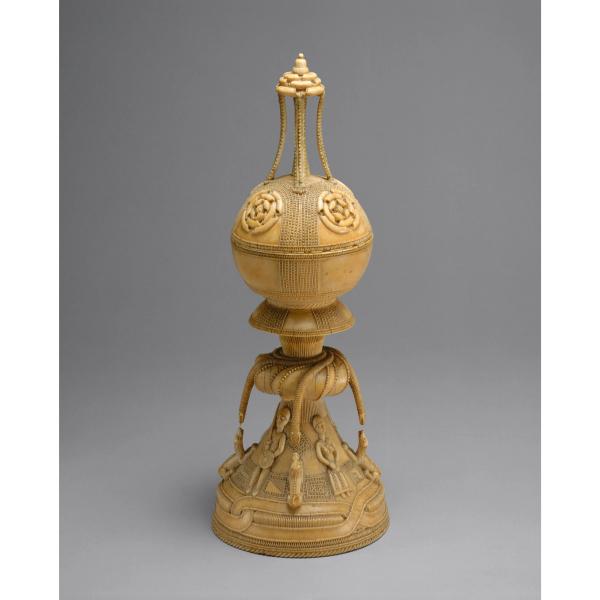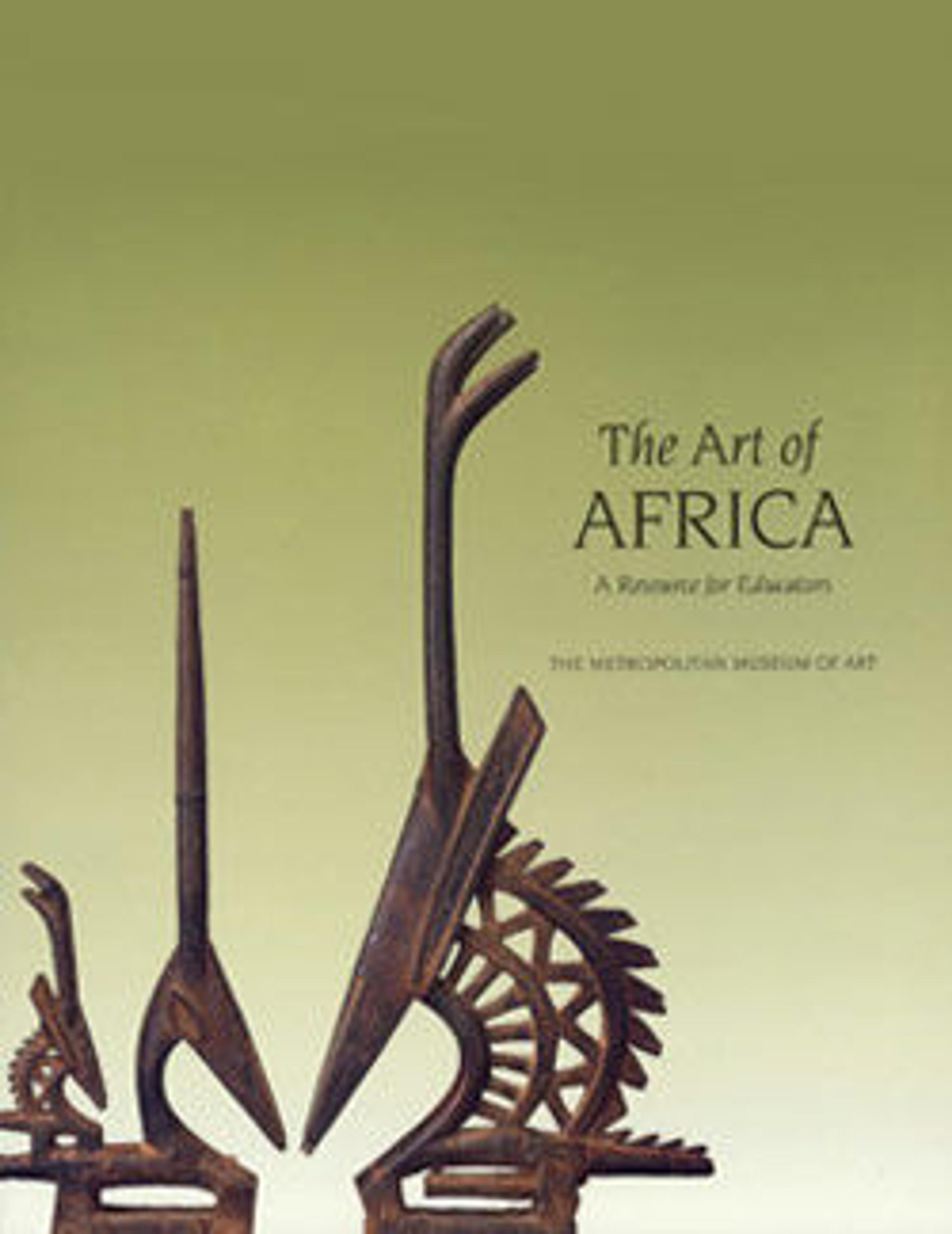Lidded saltcellar
This work contains imagery relating to early Temne and Bullom worldviews. The four snakes, associated with mystical wealth, appear to confront four growling dogs. According to regional traditions, dogs are considered spiritually astute animals able to see spirits and ghosts that are invisible to humans. This depiction of the dogs, with teeth bared, hair bristling, and ears laid back, may relate to that ability. However, the level of animation in this scene could also derive from chivalric hunting scenes in European woodcuts, which were furnished to local African artists by their European patrons.
Artwork Details
- Title: Lidded saltcellar
- Artist: Temne or Bullom artist(s)
- Date: ca. 1490–1530
- Geography: Sierra Leone
- Culture: Temne or Bullom
- Medium: Ivory
- Dimensions: H. 11 3/4 x Diam. 4 1/4 in. (29.8 x 10.8 cm)
- Classifications: Ivory, Ivory/Bone-Vessels
- Credit Line: Gift of Paul and Ruth W. Tishman, 1991
- Object Number: 1991.435a, b
- Curatorial Department: The Michael C. Rockefeller Wing
Audio

1542. Lidded saltcellar, Temne or Bullom artist
Mamadou Diouf
ANGELIQUE KIDJO (NARRATOR): This ivory salt cellar was commissioned by a Portuguese patron from a Temne or Bullom carver living along the coast of present-day Sierra Leone. The result is a fascinating intertwining of imagery, forms, and ideas relating to two distinct traditions.
Here is Mamadou Diouf, professor of History and African Studies at Columbia University.
MAMADOU DIOUF: What has happened there is the emergence of these African communities living in the Atlantic cities, opening up a new world not only of exchanging, but a world of mixing.
You have this very strong presence of these Atlantic people who are constructing new cultures, new identities as people who are part of a global history.
ANGELIQUE KIDJO: Notice the alternation of male and female figures at the base. Above, hissing snakes confront barking dogs. Such elaborate vessels served mainly as display pieces in European collections during a time of increasing cultural exchange as Portuguese maritime merchants developed direct trade relationships with communities in West Africa.
MAMADOU DIOUF: You have a long period where the Portuguese are the most important European presence in Africa. They were forced to negotiate with Africa, and in many cases, they did not control the coast. And Africans were effectively able to engage in a kind of diplomatical relations, but were able also to protect their territory and protect their interest. So that phase is before the centrality of the Atlantic slave trade, a period of exchange of partners treating each other equally.
Listen to more about this artwork
More Artwork
Research Resources
The Met provides unparalleled resources for research and welcomes an international community of students and scholars. The Met's Open Access API is where creators and researchers can connect to the The Met collection. Open Access data and public domain images are available for unrestricted commercial and noncommercial use without permission or fee.
To request images under copyright and other restrictions, please use this Image Request form.
Feedback
We continue to research and examine historical and cultural context for objects in The Met collection. If you have comments or questions about this object record, please contact us using the form below. The Museum looks forward to receiving your comments.
